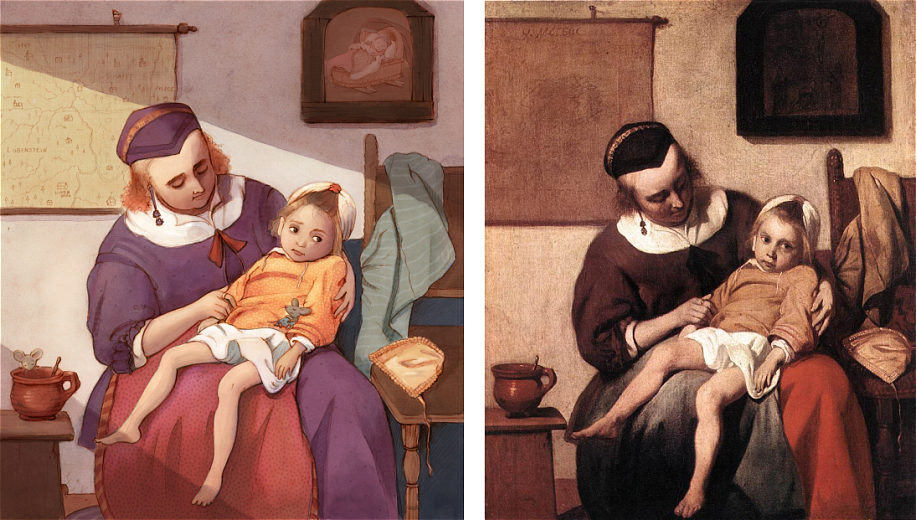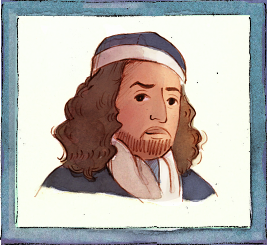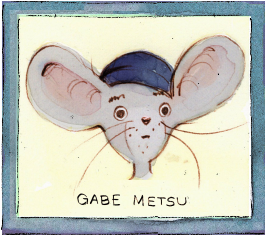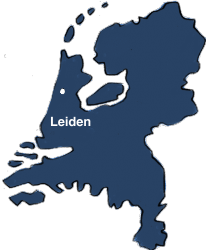

size of the original painting: 12.5 inches x 10.5 inches
Take a look at this poor girl: Notice her tired body snuggling into her mom, the dark circles under her eyes, and how she’s trying to smile. Have you ever felt sick like that? People think Metsu painted this during the Bubonic plague in Amsterdam. (The Bubonic plague is like having a really bad flu, and many people died at this time.)
Your parents probably know how her mom is feeling. Look at how attentive she is—her eyes won’t leave her daughter! Notice her grim, leaning face, her bent over posture, her comforting, hopeful, almost clinging hands. Everything shows the worry and love she has for her daughter.
Although this happened in 1665, Metsu captured emotions that everyone feels no matter the date or culture!
Metsu’s muted color choices also add to the heaviness in the room. Look around for other details that tell more of their story: the small satin bonnet (probably sewn by her mom?), the mother’s jacket thrown haphazardly over the chair, and a bowl of forgotten soup. And can you find a map of Europe and a picture of Jesus’s suffering? Both are hard to see, but these details give this painting extra layers of meaning.
Meet the Artist:

We don’t know much about Gabriël Metsu’s early life except that his biological father—also a painter—died eight months before Gabriël was born. Later, his father-in-law was a potter and his mother-in-law a painter, and some people think Gabriël’s wife probably also painted—so painting was in the family!
Although Gabriël made art about history, still life (paintings of plants or fruit without people), and portraits, many of his most memorable paintings show normal people doing normal things—like visiting the market or making pancakes. We call these genre paintings. But if you look closely at this art, you’ll also find details that add layers of symbolism and meaning.
Most of all, people love how Gabriël’s paintings tell stories filled with emotion. And in many of these stories (like this painting), he invites us to wonder what will happen next. This makes us think and feel more than we otherwise would.
Fun facts about Metsu:
• Metsu used his wife as a model for many of his paintings—like the mother in this one.
• In Metsu’s lifetime, wealthy and middle-class Dutch families filled their homes with a lot of paintings and prints. Perhaps that’s why there are so many Dutch painters (including Metsu)!

Where in the world: The Netherlands
